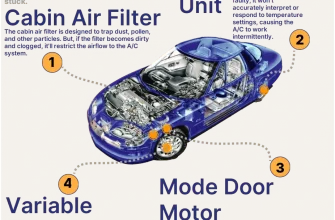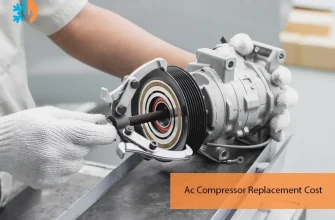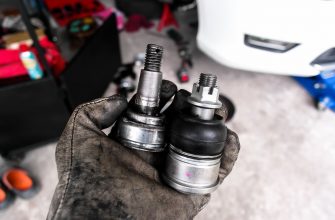Exhaust systems are critical components of any vehicle, ensuring that harmful gases are expelled efficiently. While welding is a traditional method for connecting exhaust pipes, it may not always be the most feasible or accessible option for everyone. Whether you’re a DIY enthusiast, a mechanic, or simply looking for alternatives, there are several innovative methods for connecting exhaust pipes without the need for welding. Let’s explore these creative solutions that promise durability and effectiveness.
1. Exhaust Clamps
One of the simplest and most effective ways to connect exhaust pipes without welding is by using exhaust clamps. These clamps come in various sizes and types, including:
- Band Clamps: These encircle the pipes and are tightened using a bolt mechanism, ensuring a secure fit.
- U-Clamps: Shaped like a ‘U’, these are used to connect two pipes together and are tightened at the ends.
- V-Band Clamps: These provide a tight seal and allow for easy disassembly, making them ideal for performance applications.
These clamps are not only easy to install but also allow for flexibility in the exhaust system, which can be beneficial for any adjustments or repairs.
2. Slip-Fit Connections
Slip-fit connections are another popular method for connecting exhaust pipes without welding. This technique involves having one pipe end slightly larger than the other, creating a snug fit when the smaller pipe is inserted into the larger one. Here’s how to implement this method:
- Ensure that the pipes are cut cleanly and at the correct angles for a proper fit.
- Use a high-temperature silicone sealant or exhaust paste to create a tight seal that prevents leaks.
This approach is not only straightforward but allows for easy removal and replacement of pipes when necessary.
3. Exhaust Gaskets
Exhaust gaskets can also play a significant role in connecting exhaust pipes without welding. These gaskets are placed between the pipe joints to ensure a leak-proof seal. Here’s what you need to know:
- Choose gaskets made of materials that can withstand high temperatures, such as graphite or metal.
- Ensure that the surfaces of the pipes are clean and free from rust for optimal adhesion.
Using gaskets can provide a robust connection that is perfect for high-performance applications.
4. Hose Clamps
For a temporary or flexible connection, hose clamps can be an excellent solution. They work similarly to exhaust clamps but are typically used for smaller diameters. Here’s how to use them:
- Slide the clamp over the pipe end before connecting the pipes.
- After inserting the pipe, tighten the clamp to secure the connection.
While hose clamps are not as durable as other methods, they can be effective in non-critical applications or for temporary fixes.
5. Flexible Exhaust Tubing
Using flexible exhaust tubing is a creative way to connect pipes without welding. This method allows for adaptability in tight spaces or unconventional layouts. Here’s how to use it effectively:
- Measure the required length of flexible tubing needed for your application.
- Cut the tubing to size and connect it to the existing pipes using clamps or slip-fit methods.
Flexible tubing can absorb vibrations and movement, making it a suitable option for vehicles that experience significant stress on their exhaust systems.
Connecting exhaust pipes without welding is not only possible but can be achieved through various innovative methods. Whether you opt for clamps, slip-fit connections, gaskets, hose clamps, or flexible tubing, each of these methods has its advantages and can be tailored to fit your specific needs. The key is to ensure that all connections are secure and leak-proof to maintain optimal exhaust flow and vehicle performance; So, the next time you find yourself in need of connecting exhaust pipes, consider these creative methods and enjoy the satisfaction of a job well done!
6. Threaded Connections
For those with a penchant for a more industrial approach, threaded connections can offer a robust solution. This method involves using threaded pipes and corresponding nuts to create a secure joint. Here’s how to make it work:
- Start by ensuring that both pipe ends are threaded properly. If they aren’t, you’ll need to use a pipe tap to create threads.
- Apply a suitable thread sealant to prevent exhaust leaks, then connect the pipes by screwing them together with the appropriate nuts.
This method is especially useful for high-stress applications, as the threaded connection can handle significant vibrations and movement.
7. Use of Epoxy or High-Temperature Adhesives
If you’re looking for a more permanent solution without the use of heat, consider epoxy or high-temperature adhesives. These adhesives are specially formulated to withstand the extreme heat generated by exhaust systems. Here’s a quick guide on how to use them:
- Clean the surfaces of the pipes thoroughly to ensure maximum adhesion.
- Mix the epoxy according to the manufacturer’s instructions, then apply generously to the connection area.
- Press the pipes together and hold them in place until the adhesive sets. Allow the recommended cure time before starting the engine.
This method provides a strong bond that can outlast many mechanical connections if applied correctly.
8. Exhaust Pipe Reducers and Expanders
In situations where the diameter of exhaust pipes varies, using reducers or expanders can be a lifesaver. These fittings allow you to connect pipes of different sizes without welding. To implement this method:
- Select the appropriate reducer or expander according to the sizes of the pipes you are connecting.
- Attach the reducer/expander using clamps or a slip-fit connection, ensuring it is secure and leak-proof.
This solution not only facilitates the joining of pipes but also smoothens the exhaust flow, enhancing overall system efficiency.
9. Custom Exhaust Hangers
Sometimes, connecting exhaust pipes without welding is not just about the joints; it’s also about how they are supported. Using custom exhaust hangers can help support the weight of the system while providing flexibility. Here’s how to create your own:
- Purchase durable rubber or polyurethane hangers that can handle high temperatures.
- Attach the hangers to the vehicle’s frame using bolts or clamps, ensuring they are securely fastened.
- Connect the exhaust pipes to the hangers, allowing them to move slightly during operation without stressing the joints.
This method not only makes connections easier but also reduces the risk of breakage due to vibration or movement.
10. Slip Joint Connections
Finally, slip joint connections are an excellent way to create temporary or adjustable connections in your exhaust system. This method allows for quick disassembly and reassembly, which can be particularly useful for performance tuning or maintenance. Here’s how to set it up:
- Prepare the ends of the pipes by ensuring they are cut straight and clean.
- Slide one pipe into the other, then secure with clamps or a hose clamp.
This connection is simple, effective, and allows for adjustments in the exhaust system as needed.
Final Thoughts
Connecting exhaust pipes without welding opens up a realm of possibilities for DIY enthusiasts and professionals alike. Each method presented here has its own strengths and is suitable for various applications, from temporary fixes to more permanent installations. The key to success in any of these methods lies in ensuring a secure, leak-free fit. With a bit of creativity and resourcefulness, you can achieve a functional exhaust system that meets your needs without the need for welding equipment. So, roll up your sleeves and explore these alternatives—your vehicle’s exhaust system will thank you!










I loved this article! It’s packed with practical tips that anyone can use, regardless of their mechanical skills. Highly recommend!
I appreciate the focus on non-welding methods. It’s refreshing to see practical solutions for DIY enthusiasts like myself!
I found the section on slip-fit connections particularly useful. It’s a simple yet effective solution that I can easily implement myself.
Very informative piece! The use of gaskets in exhaust systems is something I hadn’t considered before, but it makes perfect sense.
Great read! The explanation of exhaust clamps was very clear and informative. I feel more confident tackling my exhaust system now.
This article is a game-changer! I had no idea there were so many alternatives to welding for exhaust connections. Very helpful!
This article provides fantastic insights into alternative methods for connecting exhaust pipes. I never knew clamps could be so effective!